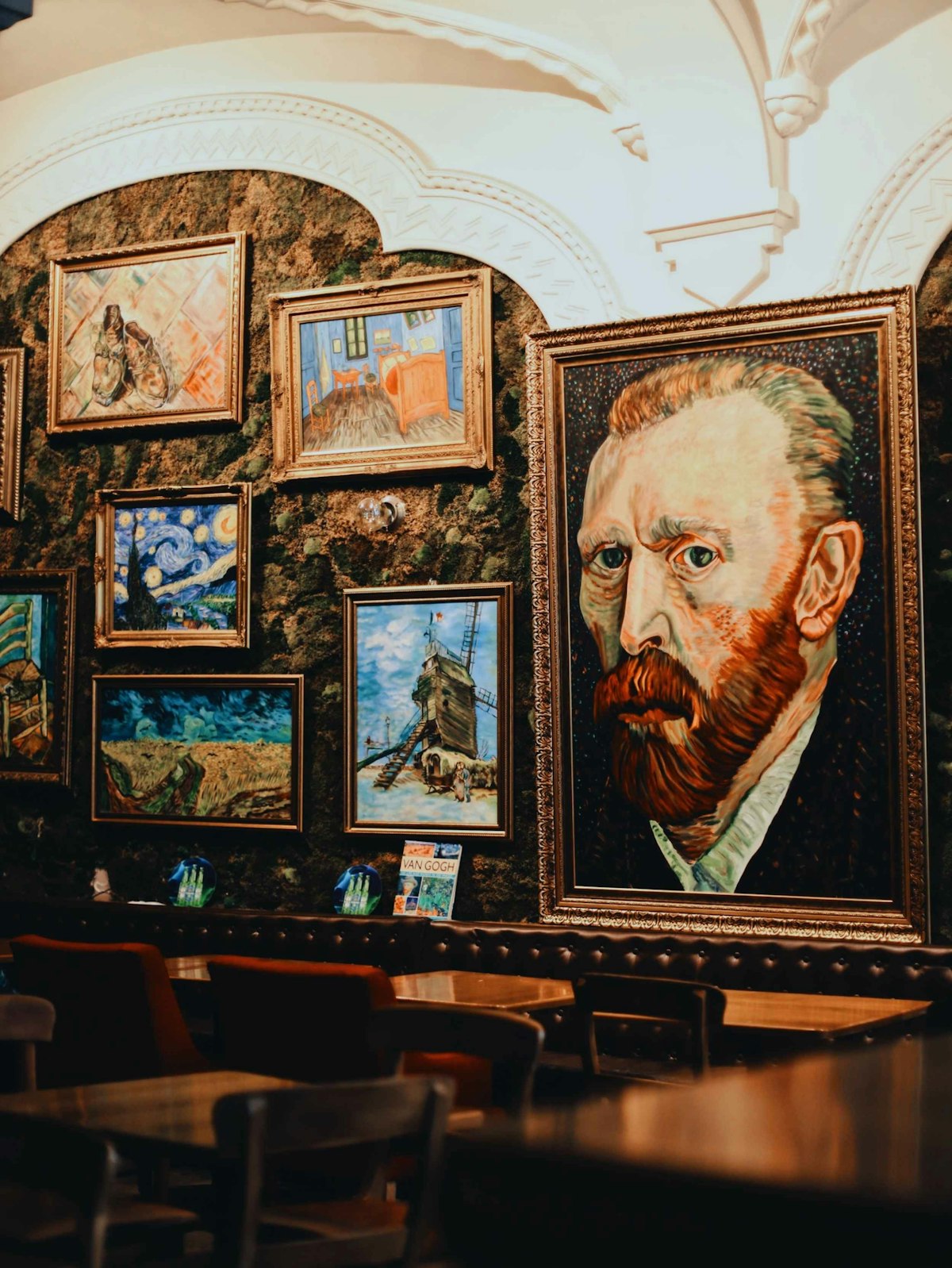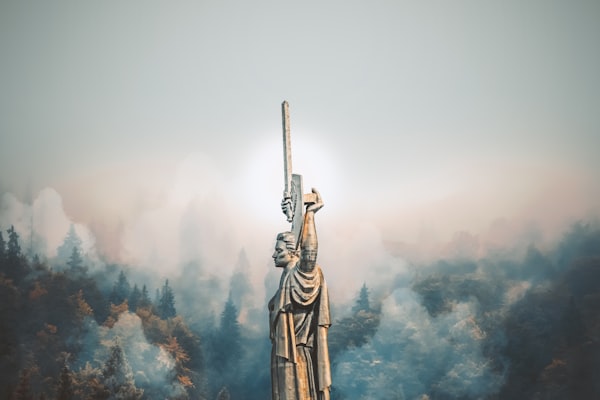Lust For Life: A Monument Dedicated to Futility of Genius
Review of a biography of Vincent Van Gogh by Irving Stone.

A review of Irving Stone's book "Lust for Life".
While the men of letters have duly recorded the travails of many a genius with panache, it takes an in-depth knowledge of the human mind, an impartial assessment of emotions and clarity of vision insofar as what the subject under scrutiny aspired for, to empathise with the protagonist and sit in judgment of his actions, and finally pronounce the verdict in a narrative, pregnant with a genuine urge to record for the posterity the vicissitudes that transformed a mere man into someone great. In my opinion, Irving Stone manages to attain the ideal blend of all the elements required to soothe the palate of an avid reader by dishing out a book so monumental in its essence that it only adds to aura of Vincent Van Gogh. I am talking about Stone’s Lust for Life.
Tracing the journey of Vincent Van Gogh from the comforts of his prosperous life to the wilderness of ignominy before culminating on the threshold of success, Stone manages to hold the attention of his readers in a manner a seasoned wizard captivates his audience, pulling off one trick after another with unsurpassed dexterity. The book is largely based on the letter exchange between Vincent and his brother Theo, a well-to-do art dealer with the family’s concern Goupils. However, the narrative is interspersed with fictional conversations and situations, which the writer took the liberty of imagining to be the logical outcome of the evidence he had at his disposal.
I don’t intend to give away the details of the story, but for the purpose of this narrative, I must at least make some reference to the salient features of the novel, but all the way making sure that a prospective reader is not robbed of the pleasure of perusing through the pages to reach his own judgment.
The success of any novel rests on its capacity to move a person, insofar as turning over a new leaf attains a new meaning. The travails Gogh undergoes, unyielding to the temptations of an easier life, make one wonder how bright the flame of passion in his heart was to lead him on a path that brought him only pain throughout his life. Gogh was not aiming for glory; he only wanted so much from his pursuits, as he could sustain on, without burdening his generous brother.
There are passions that get kindled only when the heart is hurt. Gogh’s path was charted out for him after his first love interest, Ursula, shunned all his advances. Unable to keep the overflowing fountain of passion contained, Van Gogh takes refuge in the word of god. However, his travels to the squalid Borinage only take him away from the path and he ends up taking up the easel, abandoning his mission of spreading the gospel.
The days at Borinage are spent among the wretches, whom even gods have forsaken. Gogh throws his lot with the poor miners, but is soon made to realise by the powers that be that even god does not want the miserable lot he had taken under his wings. By the time his stint at the Borinage comes to an end, it’s upon Theo to save his elder brother from the clutches of death and nurse him back to life. It’s here that Gogh decides to become a painter. In the coal pits of the Borinage Gogh finds his calling, ably supported by his brother.
However, he returns to his parents’ place to recuperate from a debilitating illness he had suffered, primarily due to lack of food, only to fall in love with another woman, who turns out to be his cousin. Once his advances are spurned by the recently-widowed cousin, Gogh suffers yet another jolt. His heart badly shattered, he immerses himself yet again in the pursuit of his dreams.
Theo arranges affairs, such that Gogh reaches the Hague, where he meets his mentor. The journey, though, is not bereft of pain. Once at the Hague, Gogh starts afresh and finds that he is far behind the masters of his age than he had thought. Months are invested in chiselling out the skill only his brother and he believed he had.
At the Hague, Gogh meets a prostitute, in whom he finds a strange sense of companionship. Here Gogh undergoes a strange metamorphosis. In the face of hostile ridicule, Gogh sets up a home with the destitute woman. However, the episode ends in tragedy, with Gogh being forced to leave again for his parents’ place to recuperate. At his parents’ place he enters into another relationship with a woman, who is much elder to him. This too proves counterproductive to his aspirations when the woman, torn between her commitment to her sisters, who were opposed to their union, and her love for Gogh, attempts suicide by consuming poison.
This time Gogh beats a hasty retreat to Paris, where he shares a lodging with his brother. It’s here that Gogh is introduced to a clutch of painters, who were revolutionising the world of art. The Impressionists leave a lasting impression on Gogh, who begins to analyse his skills in an entirely new light. He forms acquaintance with Gaugin, who later joins Gogh on the penultimate leg of his journey. Inspired by the Impressionists, Gogh decides to retreat to an Italian countryside to dabble in colours. He sets himself an accommodation and persuades Gaugin to share the lodgings.
However, the journey, so fraught with tragedy, was yet to reach its denouement. The pair – Gogh with his artistic aspirations and romantic sensibilities and Gaugin summoning his entire resource of contemptuous remarks tinged with sadistic inclination – proves to be incompatible. In a fit of rage, Gogh tries to murder Gaugin, straining their already tenuous relationship further. Though Gaugin manages to evade the onslaught, a distraught Gogh attempts suicide. After much drama, Theo brings back Gogh to his place. Later, the artist is sent to live with a doctor, where Gogh makes a successful bid on his life, ending prematurely a career, which never saw success during its term.
It’s the sense of futility that Stone manages to evoke in his narrative that makes the book all the more haunting. The matter-of-fact manner, in which Stone goes about, leaves a lasting impression on the mind about futility of action. However, he compensates for all the negativity with an eloquence of verse that sheds light on the lesser thought of aspects of life. Given the meticulous research Stone would have undertaken to bring the task to accomplishment, it seems as though Stone tread the same path, in a different age, to see things from the eyes of a painter long buried. Indeed, to imagine what all could have taken place behind those two eyes and then say it in so many words without wielding the scpetre of a justice is a daunting task Stone honourably discharged. I might not be mistaken for suggesting the book as a must read to any person, who claims to be a lover of art.




